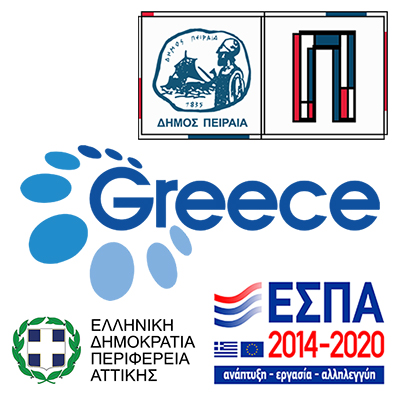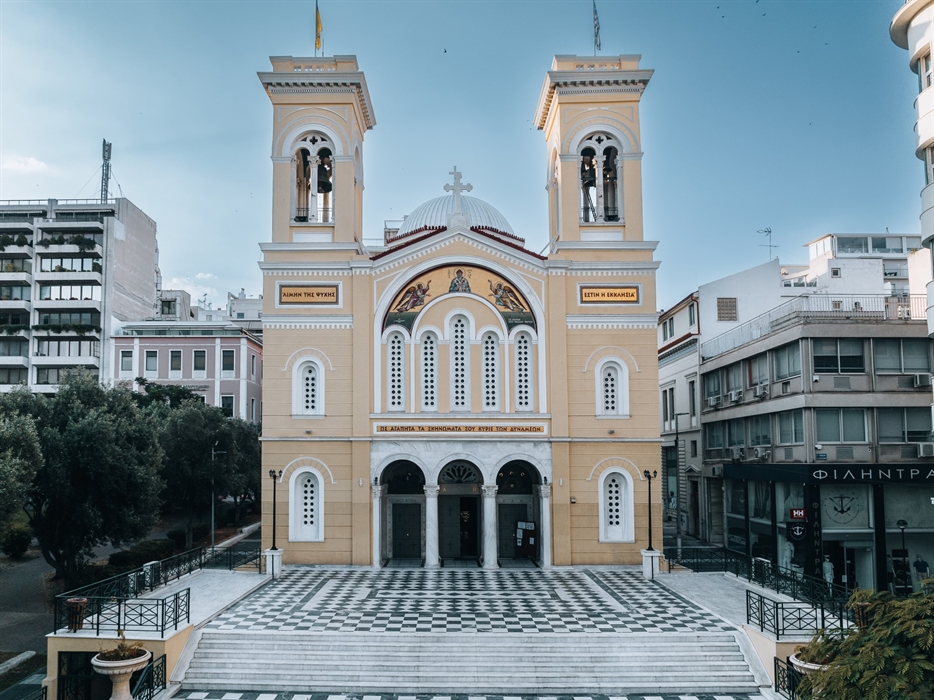The history of the church of Agios Spyridon, the patron saint of Piraeus, is a tale that traces its origins back to the 11th to 12th century, according to some references. Other historical sources suggest it was established as a small chapel in the 16th century. What is certain is that during the years of Frankish and Ottoman rule, there was a monastery dedicated to Agios Spyridon on the northeastern side of the so-called Porto Draco or Porto Leone, where the Lion of Piraeus stands.
Legend has it that some monks began their ascetic life on a barren hill with caves (hermitages) on the then-eastern side of Piraeus. Following the model of the monasteries on Mount Athos, they constructed buildings that eventually took on a fortified appearance. Nautical maps and explorers of the Frankish and Ottoman periods recorded the existence of the monastery. It is believed that the monastery was wealthy and owned extensive lands. According to tradition, it was well fortified with walls, defenders, and "zematistres" (points on the wall from which they poured hot oil on attackers). The monks had to repel pirate and bandit raids on several occasions. During that period, the monastery had an abbot, a lordship, guesthouses, a kitchen, a bakery, and a dining hall. It could accommodate up to 70 guests. A grand celebration was held on the feast day of Agios Spyridon.
During the Greek War of Independence in 1821, the monastery became a refuge for the homeless, but it too fell victim to looting and was captured by the forces of Omer Vryonis, a Turkish-Albanian leader.
When the Franks retook Athens, life returned to its previous rhythm in the area around the monastery, until the arrival of Kioutachi in 1826. The bombardment of Turkish positions by the allied forces, some of whom were trapped in the monastery, might have led to the city's final liberation, but it also resulted in the destruction of the monastery.
With the arrival of Ioannis Kapodistrias in 1828, some monks returned to rebuild it. The reconstruction of the Piraeus city began around the monastery. This intensified when King Otto ascended the throne in 1834.
The first funds for the construction of a new church were collected through loans, fundraisers, and donations, including one from the Russian Ambassador. Plans were submitted by the renowned Greek architect Cleanthes, who envisioned a grand 400-square-meter building with two bell towers, rich sculpted ornamentation, and a capacity of 1,000 people! However, his proposal was disproportionately costly relative to the Municipality's budget, so it was revised by the Bavarian engineer Eduard Schaubert. They eventually settled on a smaller church with a single bell tower. In 1834, it was partially renovated and adorned thanks to a donation by Anestis Hatzopoulos, who had purchased Miaoulis's house across from the church. The subsequent and larger church was constructed between 1865 and 1882. From 1926 to the present, the city's patron, Saint Spyridon, has been celebrated with great solemnity and the procession of his icon on December 12th.
Informations…
It is located at 1 Miaouli Street. Phone: 210 4173529.
In December 1835, Piraeus was constituted as a municipality, and the first Municipal Council met in the then-deserted monastery's church. In 1863, the first Municipal Authorities were sworn in here.
The space in front of the church was always a problem, as it was occupied by Miaoulis's mansion. Eventually, the square was formed during the Dictatorship.
In 2016, during excavation work in Agios Spyridon Square, the ruins of the old monastery (Narthex) and findings from the Roman and Byzantine periods came to light.
We have gathered information from pireorama.blogspot.com and https://mlp-blo-g-spot.blogspot.com.
The "Haunted" Mansion of Miaoulis
Andreas Miaoulis was a Hydra-born commander of the Greek fleet during several victorious naval battles of the Greek War of Independence in 1821. He played a significant role in the early years of the newly formed Greek state. He decided to build his house on the coastline of Piraeus, right in front of the Monastery of Saint Spyridon. The iconic building, which gained notoriety as the "haunted mansion," is featured in many black and white photographs of Piraeus until its demolition in 1972, giving way to a square with a view of the sea right in front of the church.
Local myths tell of a black-robed monk appearing in the dreams of builders and laborers during the construction, questioning them about "why they are closing his house." Frightened, they would leave, one after the other. Similar dreams haunted the people of Piraeus who opposed the construction of the house in front of the entrance to Saint Spyridon's Monastery. In fact, the monk in their dreams foretold that "the owner of the house would not live inside it." In the end, Miaoulis undertook the construction by himself.
What a pity, though... He indeed didn't have the chance to live in it, as he died in 1835 from tuberculosis. The seaside boulevard in front of his house was named after him. He was initially buried in the port, but later, his remains were moved to the School of Naval Cadets and finally, in 1986, to Hydra.
Stories
Get to know the destination better by reading the following stories.
Location
Find the destination on the interactive map below.
Categories
Information
- Akti Miaouli 1, Greece, Δήμος Πειραιά
- Telephone 210 4173529


Get in touch with us
For any question
Municipality of Piraeus / Department of Tourism, Region of Attica, Greece
Designed and created by ...



